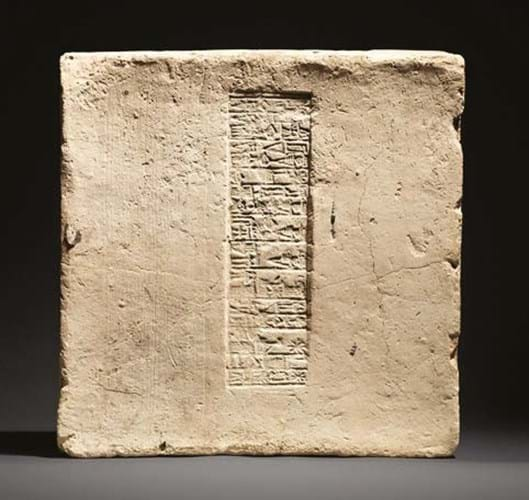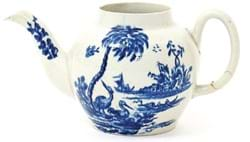
On the face and one edge of the clay brick appears a Sumerian cuneiform inscription, which bears the name Amar-Sin, King of Ur (c.1991-1973BC), the third ruler of the Third Dynasty of Ur who attempted to regenerate the ancient sites of Sumer.
The ruler used five different inscriptions for use on bricks made during his reign, with this one – created by a hand stamp – categorised as ‘Amar-Suena no 5’.
The inscription indicates that the brick came from a temple or cult centre in the city of Nippur (now in modern-day Iraq) for the worship of Enki, the Sumerian god of water, knowledge and crafts.
Two extra inscriptions appear on this brick, one on the front and one on the side, with the front inscription in reverse. It is the only known complete example of its type.
It was priced at £9500 and was sold during London Art Week when the exhibition launched (it continued until December 22).
Dizygotica was held in conjunction with collector John Kasmin, juxtaposing examples from his assortment of postcards with pieces from the gallery’s collection of antiquities.
Among other sales the gallery made during the show was a pair of Greek boat-shaped earrings from the 4th century BC, which was priced at £5500.














